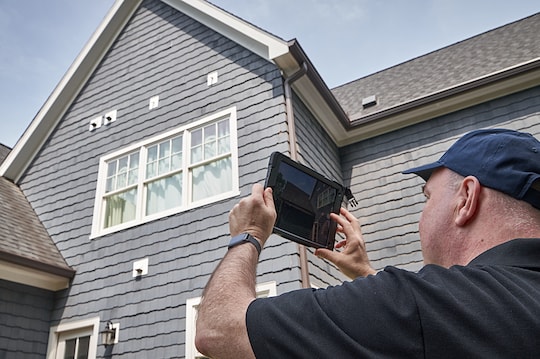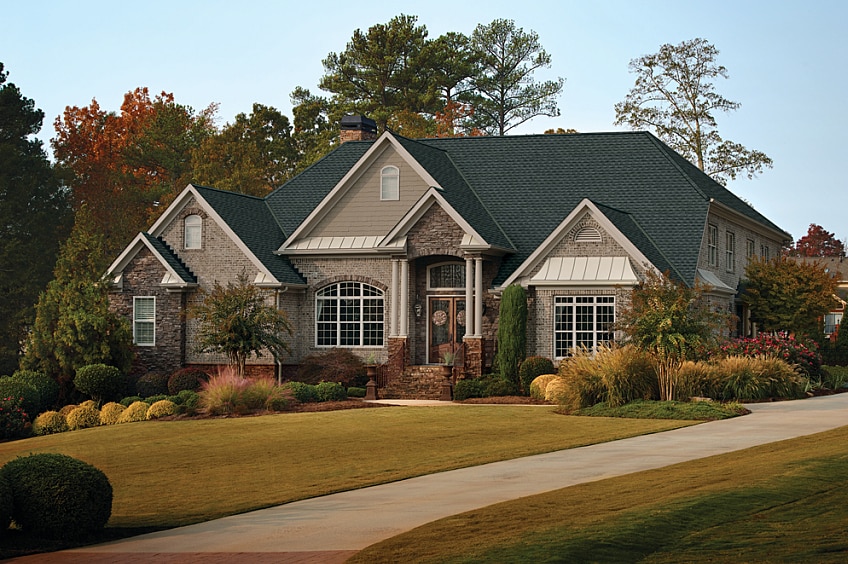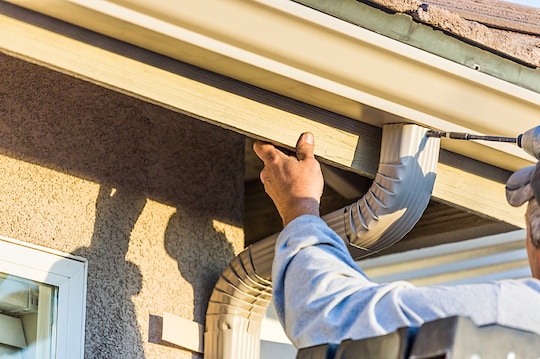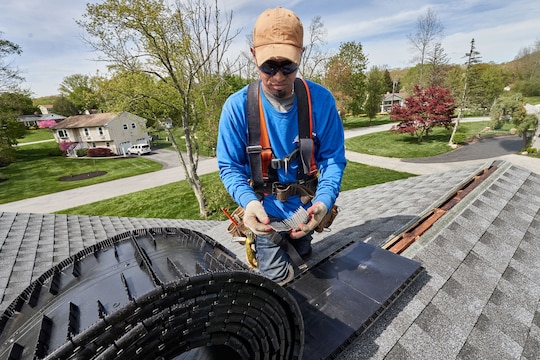
Thinking of upgrading your roof and shingle colors? You're not alone. In the last year, 76% of US homeowners made at least one home improvement project—and for good reason. Beyond adding visual appeal, home improvements make good financial sense: for example, upgrading a roof with Timberline shingles can increase the value of a home by an average of 10%*.
Whether you're eyeing new roof shingles to beautify your home, provide better protection, or boost your home's resale value, choosing a shingle color ties the whole project together. As you consider the range of options out there, here's what to factor in to ensure you hit the nail on the head with your roof's style.
What Colors Do Shingles Come in?
Roof shingles come in a range of colors—from bold and bright to stately and serene. Manufacturers like GAF offer shingles in shades of blue, red, gray, green, brown, and more. As the #1-selling shingle in North America, Timberline® Shingles set the bar for color and style trends. The top trending shingle colors for 2021 include Charcoal, Pewter Gray, Barkwood, Shakewood, and Weathered Wood.
Designer and architectural shingles give homes more visual depth by increasing the variation in the roof's texture and pattern. Timberline HDZ architectural shingles in the shade Hickory, for example, offer a rich blend of dark brown and deep red that makes a striking statement on the roof. In contrast, an elegant neutral like Charcoal can complement a wide variety of home styles and colors. Experiment with the free and easy-to-use Virtual Remodeler tool to see how your home could look with different shingle colors.
Which Shingle Color Is the Most Popular?
The five most popular GAF shingle colors—Charcoal, Pewter Gray, Barkwood, Shakewood, and Weathered Wood—are neutral shades, allowing them to match the widest range of homes.
According to expert color consultants, the shingle color you ultimately choose should consider elements such as the architectural style and paint color of your house. Even geographic location can play a role, as regional climates have typically dictated shingle color options. Fortunately, technological advances such as the long-lasting power of algae-fighting StainGuard Plus™ mean you can choose whatever roof shingle color you desire—but in hotter climates, many homeowners still opt for lighter roof shingles to help deflect the heat of the sun's rays.
In addition to protecting your home, the right shingle color creates a cohesive look with curb appeal. For example, asphalt architectural shingles like Timberline® HDZ™ Shingles offer a wood-shake appearance that looks stunning on a wide variety of homes including ranch-style and mountain homes.
What Color Roof Is Best for Resale?
When you go to sell your home, one of the first things potential buyers will lay eyes on is the roof. The right shade stands out in a good way, and choosing a shingle color that clashes with or distracts from your home's exterior can hurt your home's value. If you plan to sell—whether now or years down the road—selecting a classic, neutral color like Barkwood can win over the biggest slice of buyers. If you're upgrading shingles on your forever home, the sky is the limit as long as you adhere to local codes.
Beyond looking great, upgraded GAF shingles come with robust warranties. These warranties can be transferred to the new owner if you decide to sell, further adding value to your home.
When it comes to resale, it's also important to consider local ordinances and codes, as well as homeowner association (HOA) agreements. Not complying with area requirements could hinder home sales.
Does Shingle Color Matter?
Your roof shingle color affects more than just the look of your home—it can also impact its curb appeal and potential resale value. But it's not just about the financial impact. There's a sense of satisfaction that comes with taking pride in your home's appearance. After completing a home improvement project, 74% of owners have a greater desire to be at home, and homeowners reported a 9.5 Joy Score out of 10 after installing a new roof.
Ready to spring into action? With home improvement in the air, now is the time to contact your local contractor certified by GAF** about upgrading your roof shingle colors. Your contractor can also answer questions about roof financing and installation options.
*According to a survey of 380 real estate agents and certified appraisers of single-family residential homes.
**Contractors enrolled in GAF certification programs are not employees or agents of GAF, and GAF does not control or otherwise supervise these independent businesses. Contractors may receive benefits, such as loyalty rewards points and discounts on marketing tools from GAF for participating in the program and offering GAF enhanced warranties, which require the use of a minimum amount of GAF products.




